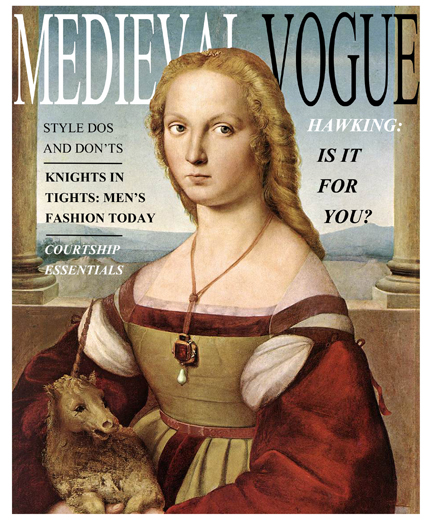 Don’t be sooooo 12th century. Get with the times whilst also enjoying this complementary copy of Medieval Vogue! Katie designed this gorgeous little mag for a massive Robin Hood shindig my library hosted some years ago. If you’d like to browse Medieval Vogue for the newest trends in poulaines this season, here is part 1 and part 2 *. For more about the event, read on!
Don’t be sooooo 12th century. Get with the times whilst also enjoying this complementary copy of Medieval Vogue! Katie designed this gorgeous little mag for a massive Robin Hood shindig my library hosted some years ago. If you’d like to browse Medieval Vogue for the newest trends in poulaines this season, here is part 1 and part 2 *. For more about the event, read on!
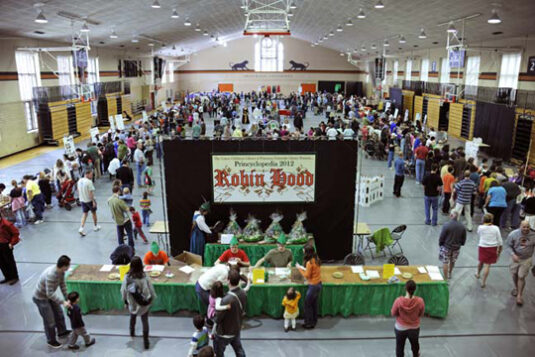
Robin Hood was the book du jour for Princyclopedia, an annual large-scale event that involved bringing a book to life from all sorts of angles – history, science, music, art, food, performances, live animals, you name it! Each table had either a demo, a hands-on activity, or something cool to take home. The 2-sided event map showed you all the table activities and also matched relevant book quotes or historical blurbs to them.
Medieval Vogue was a free take-home at the “Lifestyles of the Rich & Noble” table. Here, we were delighted to be joined by Rose Fox and Kim Hanley from Medieval Scenarios and Recreation.They brought TONS of clothes and costumes for kids to look at and try on, and answered questions about fashion from this time period.
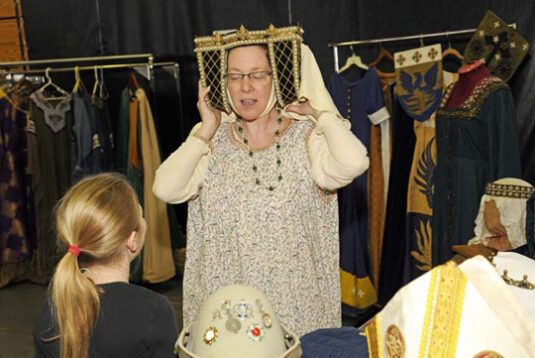
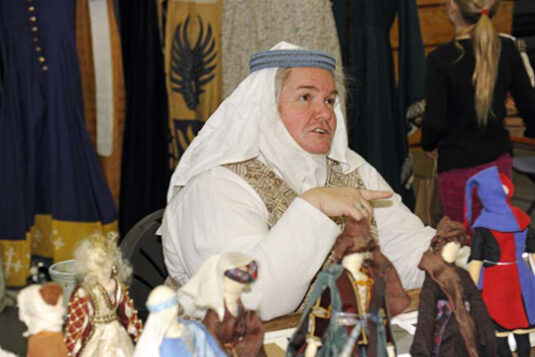 At another table, we had a different take on wearables. Namely, the armor of Sir John Williams (right) and friend (left), two knights who professionally joust at Renaissance Fairs! They brought all their gear and expertise and were simply amazing.
At another table, we had a different take on wearables. Namely, the armor of Sir John Williams (right) and friend (left), two knights who professionally joust at Renaissance Fairs! They brought all their gear and expertise and were simply amazing.
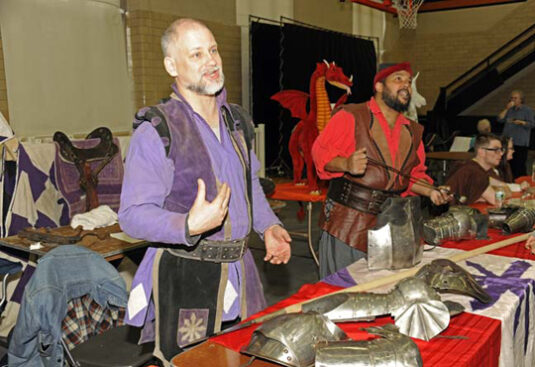
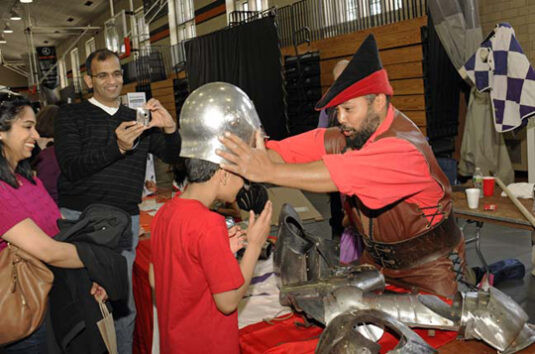
We had a TON of other activities as well…the chemistry of alchemy, venison chili, musical performances on period instruments, live hawks, the science of stained glass, actual longbows with a kid-safe shooting range, illuminated art, the math of taxation, a big play space with multiple cardboard castles, the science of stained glass, herbal amulets, siege engines, gargoyle sculpting, nature tracking, professional stage fight demos, forest conservation, two free roving court jesters, and more! And yes…a table on all the Medieval jobs you DON’T want.
Another fantastic component of the event is that it was a food drive. Families were invited to bring can and box goods to the event to benefit the Arm in Arm food pantry (formally the Crisis Ministry of Mercer County). We donated almost 500lbs of food!
I’ll finish today’s post by sharing the literacy-based table the Princeton Public Library hosted. Since literacy was uncommon during the Middle Ages, shops typically featured pictures of their goods and/or services on their signs. So we designed a game! First, we selected a bunch of images of Medieval signs. Then, we asked kids to guess what the signs represented. Rothenburg, Germany has some fantastic signs currently in use (it being an actual historic Medieval town, wow!).

Image source Wikipedia
We also wanted kids to make a personal connection, so Katie and I photographed a few local shops. We photoshopped out any words, then asked kids to guess what the signs represented. They were tickled to recognize signs they saw everyday and make a Medieval literacy connection!
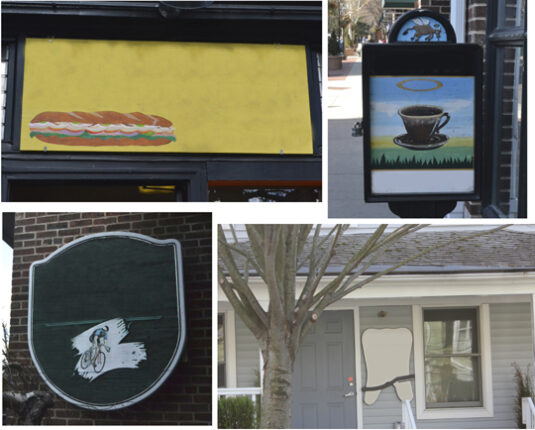
* Images used for Medieval Vogue may be subject to copyright. Please contact danas@princeton.edu if you are the author of one or more of images used here and have objection in such a use.

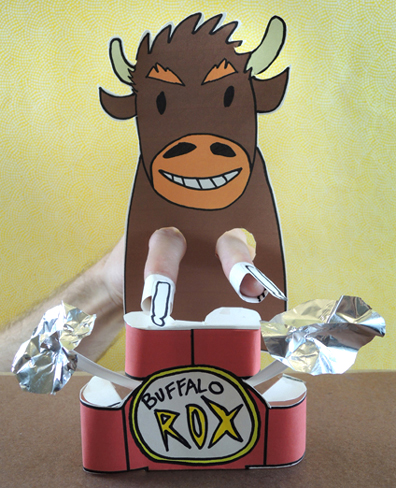
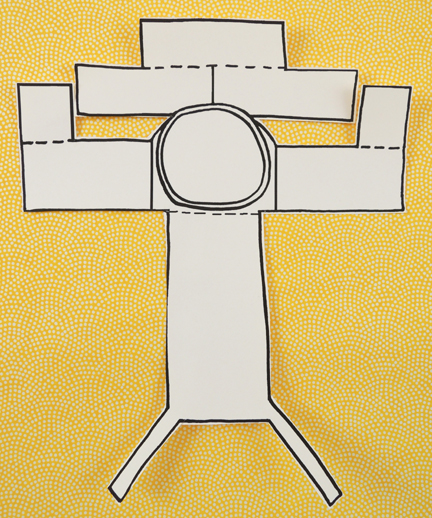 Decorate it with markers, and don’t forget to write the name of your band inside the circle of the bass drum! When you’re done coloring, flip the drum set template over:
Decorate it with markers, and don’t forget to write the name of your band inside the circle of the bass drum! When you’re done coloring, flip the drum set template over: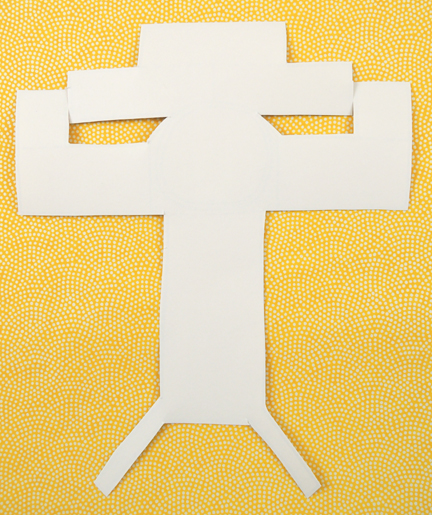 Roll the lower drums inwards, and tape them to the back of the set.
Roll the lower drums inwards, and tape them to the back of the set.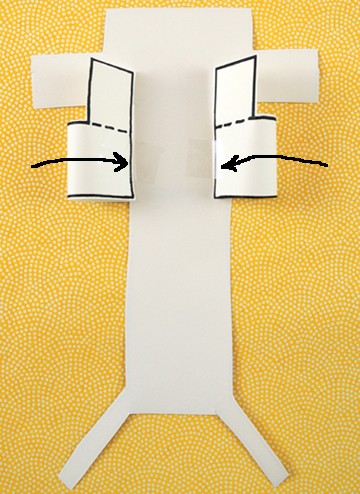 Next, fold the tabs downward along the dotted lines. These are your drum heads. Use scissors to shape them to the tops of your drums, then secure them with tape.
Next, fold the tabs downward along the dotted lines. These are your drum heads. Use scissors to shape them to the tops of your drums, then secure them with tape.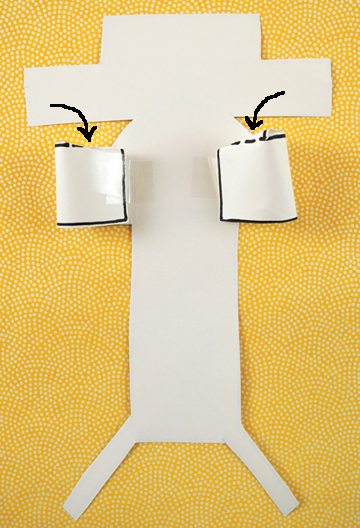 Repeat the same process with the upper drums.
Repeat the same process with the upper drums.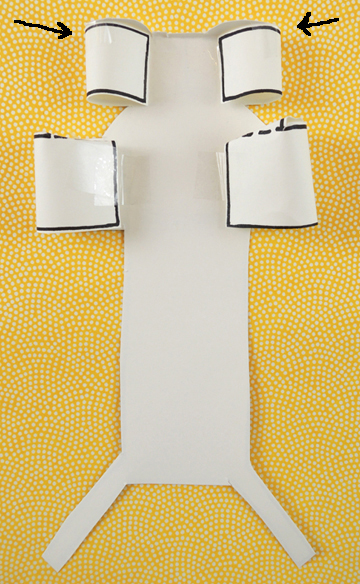 Now fold the long base of the drum set upwards, tucking the cymbal stands between the lower and upper drums.
Now fold the long base of the drum set upwards, tucking the cymbal stands between the lower and upper drums.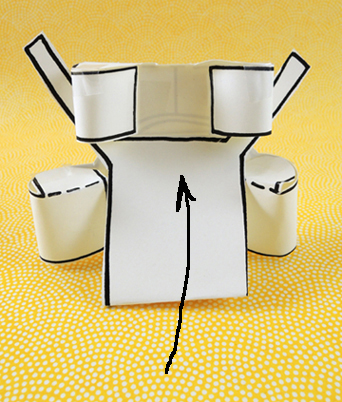 Turn the set around, and stick small
Turn the set around, and stick small 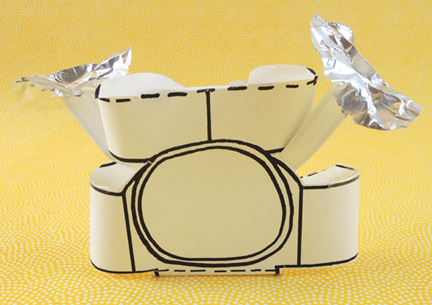 Use scrap paper from your template to fashion a pair of drum sticks and finger loops. Tape the sticks to the finger loops, and slide them over your fingers.
Use scrap paper from your template to fashion a pair of drum sticks and finger loops. Tape the sticks to the finger loops, and slide them over your fingers.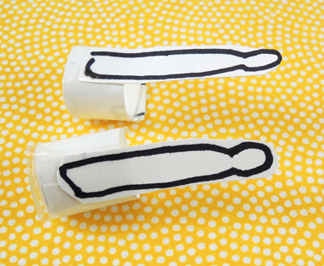 Finally, your buffalo drummer! Cut and color the buffalo finger puppet from the template (or use the full color version
Finally, your buffalo drummer! Cut and color the buffalo finger puppet from the template (or use the full color version 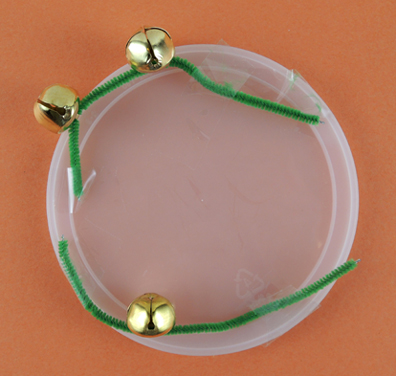 The credit for today’s simple project goes to my 6-year old daughter! She told me she wanted to make a tambourine, scrounged through art supply central
The credit for today’s simple project goes to my 6-year old daughter! She told me she wanted to make a tambourine, scrounged through art supply central 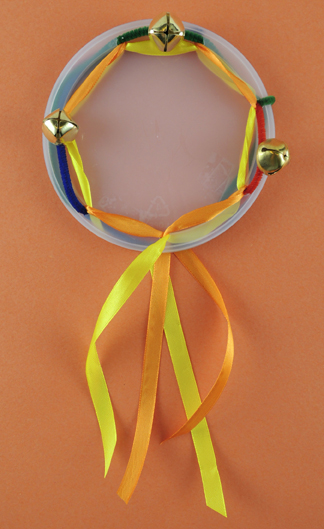 You’ll need:
You’ll need: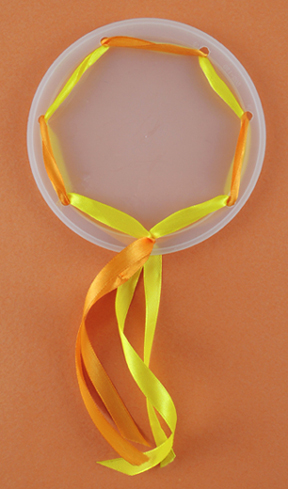 Quick hint for threading floppy ribbon through holes…create a “needle” using masking tape. When you’re finished, just unwrap the making tape, or cut it off the ribbon entirely.
Quick hint for threading floppy ribbon through holes…create a “needle” using masking tape. When you’re finished, just unwrap the making tape, or cut it off the ribbon entirely.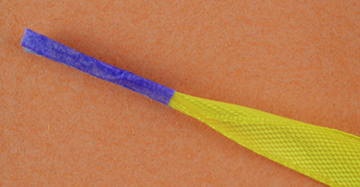 Thread a jingle bell onto a piece of pipe cleaner, fold it into a U, and and insert both ends into a pair of holes. Unfold the ends of the pipe cleaner and secure them to the back of the lid with tape. Repeat these steps with the remaining 2 bells.
Thread a jingle bell onto a piece of pipe cleaner, fold it into a U, and and insert both ends into a pair of holes. Unfold the ends of the pipe cleaner and secure them to the back of the lid with tape. Repeat these steps with the remaining 2 bells.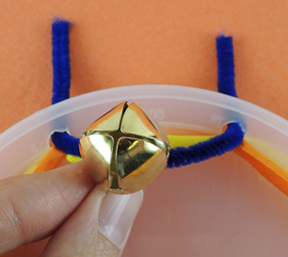 Your tambourine is finished!
Your tambourine is finished!